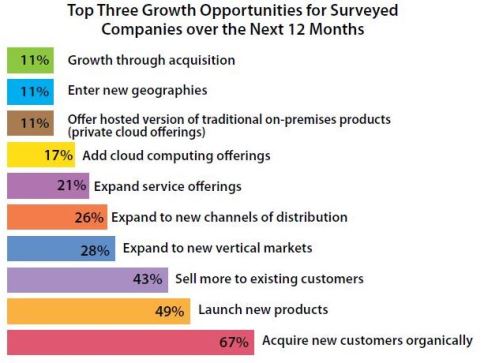Having financial data is one thing; knowing what to do with it is something else. The best cloud financial management systems let software companies dig deeper to understand the true dynamics of their business, with visibility into both financial and operating data. The best systems also provide flexibility to view the business through multiple lenses (such as understanding data and metrics by customer, vendor, employee, product or project) so you have the empirical information to make better strategic and tactical decisions.
Tech firms that view their business results through multiple lenses can isolate trends such as which new product is gaining the most traction and their impact on other products, in which regions and markets the products are selling best or having issues, which sales channels have the most volume and profitability and who is buying the products (customer industry, size and other attributes). Companies are able to identify these trends and take action because of increased insight.
This type of analysis is invaluable for successfully managing company growth strategies. Sand Hill Group’s recent study, “Software CEO / CFO Outlook 2014: The Complications of Change,” revealed the top three growth opportunities for software companies over the next 12 months: target new customers, sell more to existing customers and add the new products and services that the market demands.
Figure 1

© 2014. Sand Hill Group
While many tech firms collect the data required to manage these growth strategies, this data is usually kept in different systems with different owners. Having both financial and operating data in the same place allows companies to make better decisions by seeing the total picture.
In addition to having the data in one place, the best cloud financial management systems let you perform analysis in real time, so the reports and analysis are always accurate. The company can trust that they are making decisions with timely, complete information. And the information is pushed to all the appropriate people and is not locked up in Finance.
Plus, having a system that easily adapts to your business changes without having to constantly rewrite reports or work on error-prone Excel reporting spreadsheets ensures that you always track the business metrics that matter, even if those measures change over time as your company enters different stages of growth.
I recently spoke with a company in the HR management software market that leverages the Intacct dimensional general ledger to examine its financial data across attributes like employee, item, location, department, customer, customer size, customer source and customer industry. These real-time reports provide a multi-faceted view of revenue across key business drivers to a variety of management stakeholders.
The Sand Hill study also asked participants to identify their top three business goals for the next 12 months among a list of nine goals, with more than half (54 percent) of the executives responding that their biggest issue is maintaining company growth.
Figure 2

© 2014. Sand Hill Group
However, there is a financial management pitfall for software companies attempting to simultaneously manage all or some of the nine goals in fig 2 above — determining which financial information is the real truth. Since data comes in from multiple systems, sometimes with contradictory information, it is important to get to one version of the truth when making strategic decisions on revenue growth, products, go-to-market plans and expense management.
A cloud financial system helps simplify, centralize, and automate data analysis and reporting so that everyone works with the same set of facts. With everyone on the same page, decision making is easier and based on trustworthy data.
Finally, it’s important to understand that the data can be meaningless without context. Use benchmarking data as a baseline for comparison and understand the reasons for using those benchmarks. Using a financial system to import benchmarks for side-by-side comparison to financial and operating results gives companies the proper context for evaluating strategic options.
For example, with cloud financial management from Intacct, you receive for the first time from one source, the financial and operational information in real time so you don’t have to resort to alternatives that can’t keep pace with your business needs and do not provide you with an accurate picture of what is really happening.
Intacct delivers visibility into the standard financial metrics that you need and the unique business metrics that measure the success of your strategies and operations at every stage of your growth. And Intacct was designed to be easily configured as your business changes so you continue to automate and receive the information you need for the dynamic growth of your business.
Click here to review the contents and buy the report, “Software CEO / CFO Outlook 2014: The Complications of Change.” The report provides insights into the current and future state of the software industry, identifies new trends and tracks evolving trends and assesses the goals and challenges of growing software businesses.
Robert Reid is CEO of Intacct Corporation, a leading provider of cloud financial management and accounting software. With more than 30 years of experience in the software industry, Rob has a proven track record of driving explosive growth at innovative companies and has demonstrated a deep expertise in bringing cloud computing to the world of business applications.
